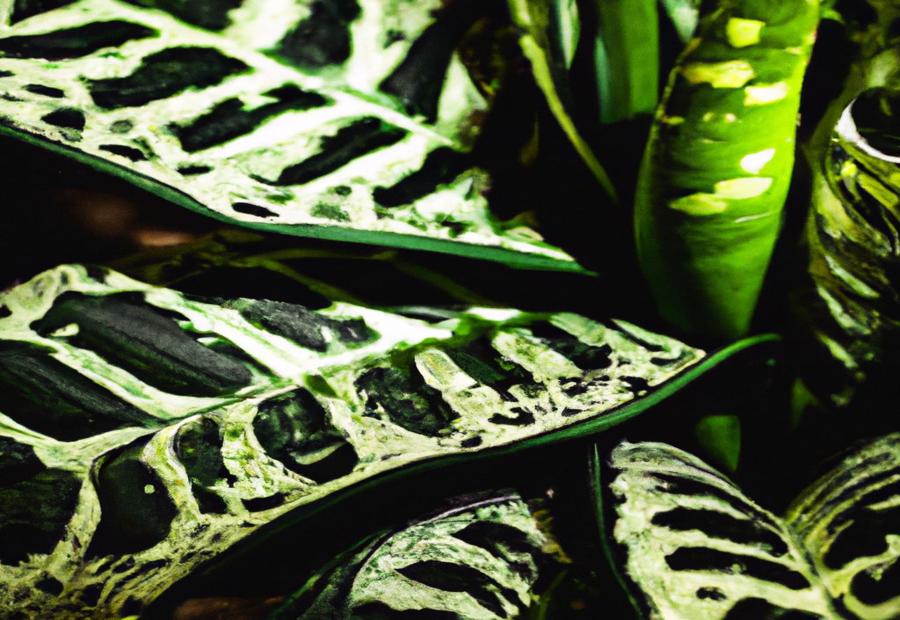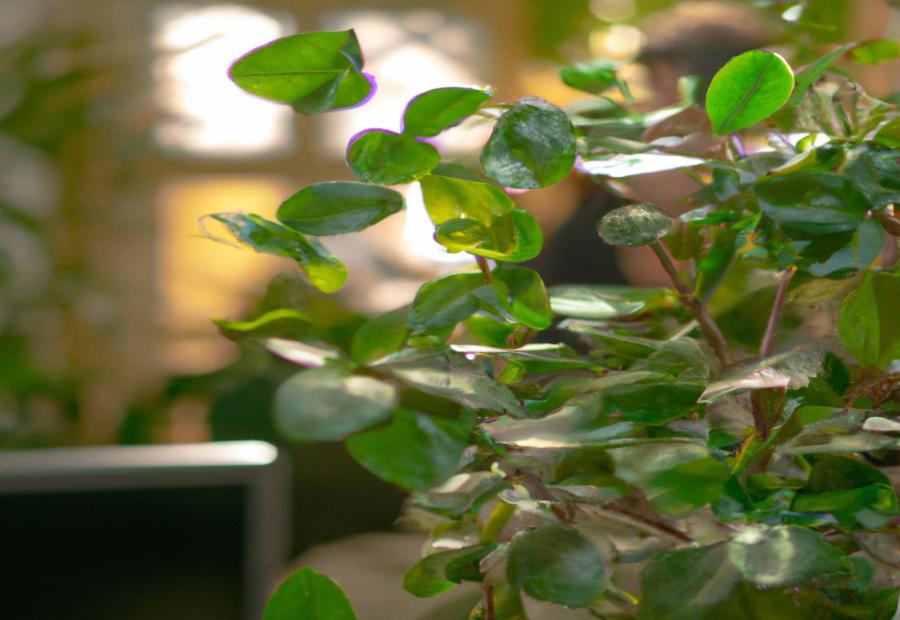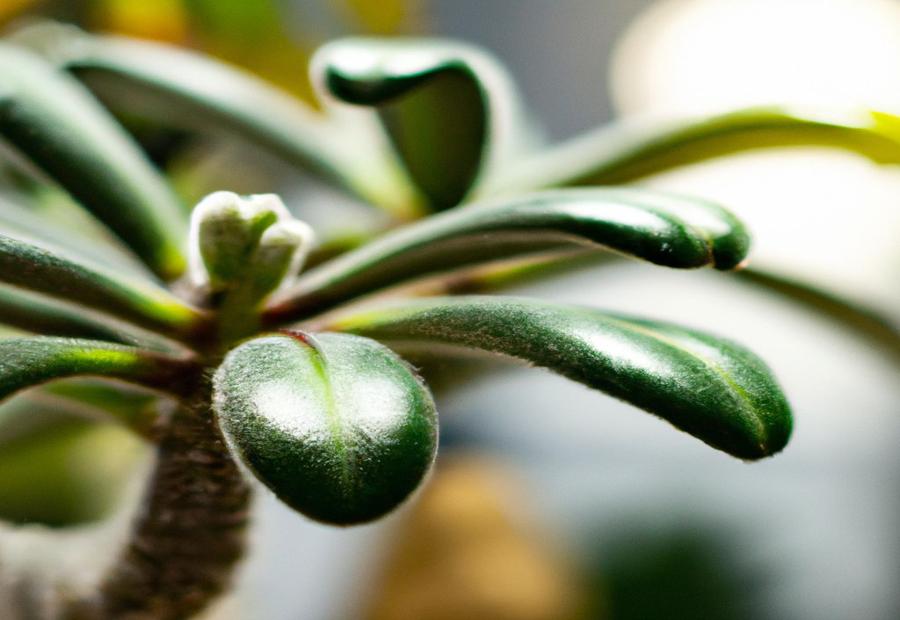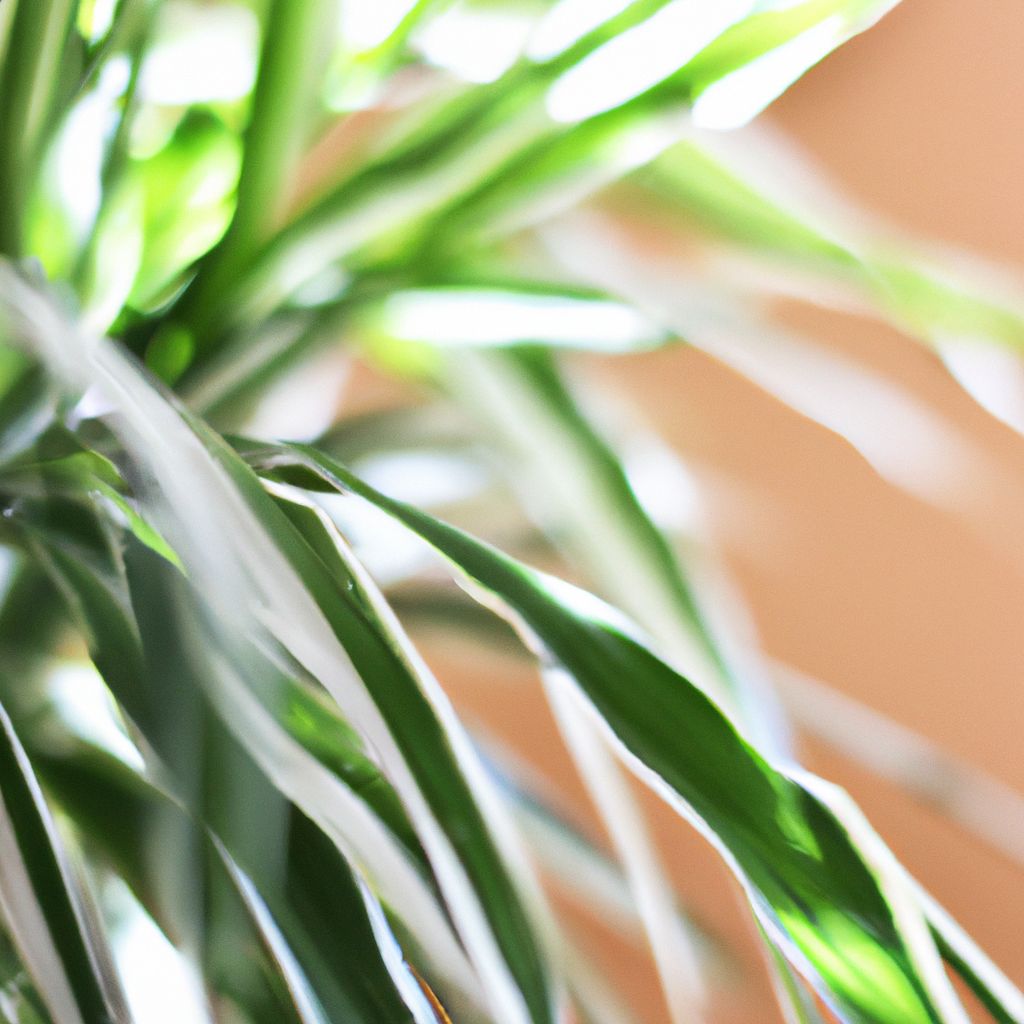The Zz plant, scientifically known as Zamioculcas zamiifolia, is a popular houseplant cherished for its striking glossy green leaves and low-maintenance nature.
While the Zz plant naturally grows in an upward, vertical manner, many plant enthusiasts aim to achieve a bushier appearance for an aesthetic and fuller look. Making the Zz plant bushy not only adds visual appeal but also promotes healthier growth.
In this article, we will explore various techniques and tips to make your Zz plant bushy, including pruning, providing adequate light, proper watering techniques, fertilizing, and repotting. We will also discuss common mistakes to avoid and troubleshooting methods for non-bushy Zz plants.
Whether you are a seasoned plant parent or a beginner, this guide will help you transform your Zz plant into a lush and vibrant centerpiece in your home.
Let’s dive in and uncover the secrets to making your Zz plant grow faster and bushy.
Understanding the Growth Pattern of Zz Plant

Photo Credits: Allotinabox.Com by Frank Adams
The growth pattern of a Zz plant is crucial to comprehend in order to properly care for it. The Zz plant, or Zamioculcas zamiifolia, grows from an underground rhizome and produces glossy, dark green leaves on long, arching stems. Despite its slow but consistent growth, new leaves emerge from the center of the plant. Being a drought-tolerant plant, it can thrive in low light conditions, which makes it a popular choice for indoor gardening.
To grasp the growth pattern of a Zz plant, take note of the direction in which new leaves sprout. They will appear in an alternating pattern, each emerging from a slightly different position on the stem. With time, the plant develops a bushy look with a dense cluster of leaves at the top.
An insightful tip for understanding the growth pattern of a Zz plant is to occasionally rotate it. This ensures even light distribution on all sides and prevents lopsided growth. Additionally, trimming long or leggy stems can promote new growth and maintain a more compact shape.
Understanding the growth pattern of a Zz plant empowers you to provide optimal care, resulting in a healthy and bushy plant that enhances the beauty of your indoor space.
(Table tags kept intact)Why Make Zz Plant Bushy?

Photo Credits: Allotinabox.Com by Jordan Lopez
Zz plants should be made bushy to enhance their aesthetic appeal and promote healthier growth.
A bushy Zz plant signifies overall plant health and vitality.
Cultivating a bushy Zz plant helps boost its visual presence in any indoor space.
Additionally, a bushy Zz plant can improve air quality by increasing the plant’s ability to purify the surrounding air.
To make a Zz plant bushy, proper pruning techniques should be employed.
Regularly removing old, damaged, or yellowing leaves will stimulate new growth and encourage branching.
Pruning also helps manage the size of the plant, making it ideal for small spaces.
By following these practices, the Zz plant can reach its full potential and thrive in any environment.
So, why make Zz plant bushy? It enhances the plant’s appearance, promotes healthier growth, and contributes to better indoor air quality.
How to Make Zz Plant Bushy

Photo Credits: Allotinabox.Com by Peter Sanchez
Looking to transform your Zz plant into a lush, bushy beauty? Look no further! In this section, we’ll uncover the secrets to make your Zz plant bushy. We’ll explore techniques like pruning to promote new growth, providing optimal light conditions for healthy foliage, mastering proper watering techniques, fertilizing for robust plant development, and the importance of repotting for continued growth. Get ready to turn your Zz plant into a thriving green haven!
1. Pruning Zz Plant
To start pruning a ZZ plant, first choose a healthy plant.
Gather the necessary tools, which include clean and sharp pruning shears.
Identify and select the branches or stems that require pruning, such as any dead, damaged, or overgrown parts.
Using the pruning shears, carefully make clean cuts just above a node or leaf. This technique will encourage new growth and prevent leaving stubs.
To improve the overall appearance and shape of the plant, eliminate any crowded or crisscrossing branches.
To allow better light and air circulation into the inner parts of the plant, selectively thin out the foliage by cutting back branches.
Regularly inspect your ZZ plant for any signs of pests or diseases, and if necessary, prune affected parts.
2. Providing Adequate Light
Providing adequate light is essential for the healthy growth of a Zz plant. Place the Zz plant in an area that receives bright, indirect light to ensure optimal growth. It is important to avoid direct sunlight as it can be too intense and burn the leaves.
If natural light is insufficient, you can use artificial lighting such as fluorescent or LED grow lights. Position the lights about 12 inches away from the plant to ensure the optimal exposure of light. This will help in promoting the healthy growth of the plant.
Keep the Zz plant in a well-lit room, but make sure to avoid placing it near drafty windows or vents. These can cause temperature fluctuations and potentially damage the plant. To ensure uniform growth, rotate the plant periodically so that all sides receive adequate light.
It is crucial to avoid exposing the Zz plant to prolonged periods of darkness. If the plant is kept in the dark for too long, it can lead to leggy growth and weakened stems. Therefore, proper monitoring of light levels, especially during the winter months when daylight hours are shorter, is necessary. Increase the artificial lighting if needed to compensate for the reduced natural light.
By providing the Zz plant with the right amount of light, you can ensure that its foliage remains lush and healthy.
3. Proper Watering Techniques
Proper watering techniques are essential for maintaining a healthy and bushy ZZ plant. Follow these steps to ensure you are using proper watering techniques for your ZZ plant:
- Check the moisture level: Before watering, check the moisture level of the soil by inserting your finger about an inch deep. If the soil feels dry, it’s time to water the plant.
- Watering frequency: ZZ plants prefer to be on the drier side, so avoid overwatering. Use proper watering techniques and water the plant only when the soil is dry to the touch. On average, ZZ plants require watering every 2-3 weeks.
- The right amount of water: When using proper watering techniques, aim to provide enough water to thoroughly moisten the soil. Water the plant until you see water coming out of the drainage holes at the bottom of the pot.
- Drain excess water: After using proper watering techniques and watering, make sure to empty the saucer or tray underneath the pot to prevent the plant from sitting in standing water, which can lead to root rot.
- Water quality: Use room temperature tap water or let your water sit for 24 hours to allow chemicals like chlorine to dissipate. Proper watering techniques include avoiding using water that has been through a water softener, as the excess salts can harm the plant.
- Observation: Monitor your ZZ plant closely after using proper watering techniques and watering. If you notice any signs of overwatering, such as yellowing leaves or wilting, adjust your watering schedule accordingly.
True story: Sarah, an avid plant enthusiast, was excited to bring home her new ZZ plant. However, despite her efforts, the plant seemed to be struggling and losing its bushiness. After some research, she discovered that improper watering techniques were the culprit. Sarah adjusted her watering techniques, using proper watering techniques mentioned above, and soon enough, her ZZ plant started thriving. The leaves became vibrant and the plant regained its bushy appearance. Sarah learned the importance of using proper watering techniques to maintain the health and bushiness of her beloved ZZ plant.
4. Fertilizing Zz Plant
To properly fertilize a ZZ plant and promote its bushy growth, you should take the following steps:
1. Select a balanced, water-soluble fertilizer with a nitrogen-phosphorus-potassium (NPK) ratio of either 10-10-10 or 20-20-20, as recommended for the ZZ plant.
2. Carefully read the instructions provided on the fertilizer packaging to determine the correct amount to use for your ZZ plant. If you want to learn how to propagate African violet in water, follow the instructions carefully.
3. Dilute the fertilizer in water as per the instructions. You can then apply the fertilizer to the soil around the ZZ plant using either a watering can or a sprayer.
4. Apply the fertilizer every 4-6 weeks during the plant’s growing season, which typically occurs in the spring and summer. By doing so, you will provide the essential nutrients necessary to support the plant’s growth.
5. Be cautious not to over-fertilize the ZZ plant, as this can lead to fertilizer burn or nutrient imbalances. Always follow the recommended dosage specified on the fertilizer packaging.
6. After fertilizing, water the plant thoroughly to ensure the nutrients are evenly distributed throughout the soil.
7. Regularly monitor the ZZ plant for any signs of nutrient deficiency or excess. If you notice yellowing leaves, it may indicate a lack of nitrogen. On the other hand, brown and crispy leaf tips can be a sign of fertilizer burn.
By following these steps, you can effectively fertilize your ZZ plant and promote its bushier and healthier growth. Remember to always adhere to the recommended amount of fertilizer and observe the plant’s response to ensure it receives adequate nutrition.
5. Repotting Zz Plant
When it comes to repotting your ZZ Plant, it’s important to follow a few key steps. First, select a pot that is one size larger than the current one. This will give the plant room to grow and expand its root system. Once you have your new pot, it’s time to prepare the potting mix. Create a well-draining mix using equal parts of peat moss, perlite, and potting soil. This will ensure proper drainage and prevent the plant from sitting in water.
Carefully remove the ZZ Plant from its current pot, being mindful not to damage the roots. You can gently tap the sides of the pot or use a twisting motion to loosen the plant. Next, inspect the roots and prune any that are brown, mushy, or damaged. This will promote healthy growth and prevent the spread of disease.
Now it’s time to place the plant in the new pot. Position it in the center, making sure it sits at the same depth as it was in the previous pot. Fill the remaining space with the potting mix, gently pressing it down to secure the plant. After repotting, give the ZZ Plant a thorough watering to settle the soil and encourage root growth. Just make sure to allow excess water to drain out from the bottom of the pot.
Pro-tip: Remember to repot your ZZ Plant every 1-2 years to promote healthy growth and prevent the roots from becoming root-bound. This allows the plant to access fresh nutrients and maintain optimal health. To learn more about how often to water Raven ZZ Plant, click here.
Common Mistakes to Avoid
When it comes to making your ZZ plant bushy, there are some common mistakes to avoid in order to achieve the desired results:
- Overwatering: One of the most common mistakes to avoid is overwatering the ZZ plant. It can lead to root rot and eventually kill the plant. Make sure to let the soil dry out between waterings.
- Insufficient light: ZZ plants require bright, indirect light to thrive. Placing them in low-light areas can hinder their growth and make them leggy. Find a spot with adequate light for your plant.
- Using the wrong potting mix: It’s important to avoid using a heavy or compacted soil for your ZZ plant. Using a well-draining potting mix is essential to prevent suffocating the roots and promote proper growth.
- Ignoring pest infestations: ZZ plants are susceptible to pests like spider mites and mealybugs. Regularly inspect your plant for any signs of infestation and take appropriate measures to control them.
- Not pruning regularly: Pruning is essential for maintaining a bushy shape. Trim off any dead or damaged leaves and regularly pinch back the new growth to encourage branching.
Pro-tip: Remember to be patient with your ZZ plant. It may take time for it to bush out and fill the space. With proper care and avoiding these common mistakes, you’ll soon have a beautiful, bushy ZZ plant.
Troubleshooting for Non-Bushy Zz Plant

Photo Credits: Allotinabox.Com by Zachary Wright
Is your ZZ plant not as lush and bushy as you’d like it to be? Let’s dive into some troubleshooting tips to help you transform that lackluster ZZ plant into a vibrant green beauty. We’ll uncover the reasons behind insufficient light, overwatering, and inappropriate pruning, all of which can hinder your plant’s bushiness. Get ready to revive your ZZ plant and create a verdant oasis in your home!
1. Insufficient Light
Insufficient light can hinder the growth of a Zz plant. Here are some factors to consider:
- Placement: Ensure that you place your Zz plant in an area where it can receive bright, indirect light. Placing it near a window or using grow lights can help provide the necessary light.
- Duration: Zz plants thrive with at least 6-8 hours of light per day. Make sure they are not left in complete darkness for extended periods.
- Intensity: The intensity of light is also important. Too much direct sunlight can scorch the leaves, while too little light can result in leggy growth. Aim for moderate and consistent light intensity.
- Obstacles: Be mindful of any obstructions that may block light from reaching the plant. This could include curtains, furniture, or nearby plants. Move obstacles that hinder the plant’s access to light.
By addressing the issue of insufficient light, you can promote healthy growth and bushiness in your Zz plant.
Zz plants, scientifically known as Zamioculcas zamiifolia, are native to Eastern Africa. They were first discovered in Zanzibar by a German botanist in the 19th century. Due to their attractive glossy foliage and resilience to various conditions, Zz plants gained popularity as houseplants worldwide. Today, they continue to be cherished for their ability to thrive in low-light environments and their air purifying properties. With proper care and attention, Zz plants can bring greenery and beauty to any space, even in rooms with limited natural light.
2. Overwatering
Overwatering can be detrimental to the growth and health of a zz plant. To ensure the plant thrives, follow these steps:
- 1. Understand watering needs: ZZ plants prefer to dry out between watering sessions. Before watering, make sure the top inch of soil feels dry.
- How to propagate a ZZ plant: Water sparingly: Avoid overwatering by providing small amounts of water at a time. It is better to underwater than to overwater.
- 3. Use well-draining soil: Use a well-draining potting mix that allows excess water to drain quickly. This helps prevent waterlogged roots.
- 4. Adjust watering frequency: Based on the environment and conditions, adjust the frequency of watering. During winter or in cooler temperatures, reduce watering.
- 5. Monitor the signs: Keep an eye on the ZZ plant for signs of overwatering, such as yellowing leaves, wilting, or root rot. If these signs appear, adjust the watering accordingly.
A true story that emphasizes the importance of proper watering involves a zz plant owner who religiously watered their plant every day. Unfortunately, the overwatering led to root rot and the eventual demise of the plant. Realizing the mistake, the owner learned about the plant’s watering needs and adjusted their watering routine. They now have a thriving zz plant by following the correct watering regimen.
3. Inappropriate Pruning
The growth and bushiness of the ZZ plant can be hindered by inappropriate pruning.
If too much pruning is done or if too many leaves are cut off, it can weaken the plant and hinder new growth.
Damage can be caused and the plant’s ability to produce new branches and leaves can be hindered if the zz plant leaves are trimmed too close to the stem.
Introduction of pathogens and infections to the plant, leading to poor growth, can occur when dull or dirty pruning tools are used.
Disruption of the natural growth cycle of the plant can happen if pruning is done at the wrong time, such as during the winter months when the plant is in a dormant phase.
Frequently Asked Questions
1. How can I make my ZZ plant bushy and full?
To make your ZZ plant bushy and full, provide it with plenty of light. Place it in a bright spot near a window with indirect sunlight, preferably south- or west-facing. Additionally, ensure you are watering the plant appropriately, allowing the soil to dry out completely between watering. Regular fertilization with a balanced fertilizer during the growing season can also promote healthy growth. Finally, prune old growth to encourage new growth and maintain the plant’s health.
2. How fast does a ZZ plant grow?
During the growing season, most ZZ plants produce 1-3 new stems every few months, growing 6-12 inches per month. Over a span of 3-5 years, a ZZ plant can fully grow from a 1-2 stem plant. They also spread horizontally by about an inch per year and rarely exceed 2 feet in diameter.
3. How much light does a ZZ plant need to grow bushy?
A ZZ plant requires at least four hours of indirect sunlight per day to thrive and develop a bushy growth habit. Placing the plant in a bright spot near a window, preferably south- or west-facing, will provide the most intense light. However, direct sunlight can be too intense for ZZ plants, so it is recommended to use a special grow light if necessary.
4. How often should I water my ZZ plant to encourage bushiness?
To encourage bushiness in your ZZ plant, watering should be done sparingly. Allow the top half of the soil to dry out before watering again. Overwatering can lead to root rot and sparse growth. Water thoroughly until it runs out of the drainage holes, and then let the plant drain for a few hours before returning it to its pot.
5. Is fertilizer necessary to make a ZZ plant bushy?
Yes, regular fertilization can benefit a ZZ plant and promote healthy growth, resulting in a bushier appearance. Applying a balanced houseplant fertilizer once every two months during the growing season is recommended. Follow the manufacturer’s instructions carefully and avoid excess fertilizer, which can be detrimental to the plant’s growth.
6. Can I prune my ZZ plant to make it bushier?
Yes, pruning is essential to promote healthy growth and prevent legginess. Prune your ZZ plant in the spring or summer using sharp, clean scissors. Remove dried or damaged leaves and cut stems at a 45-degree angle. Pruning helps encourage new growth and keeps the plant dense and bushy.

